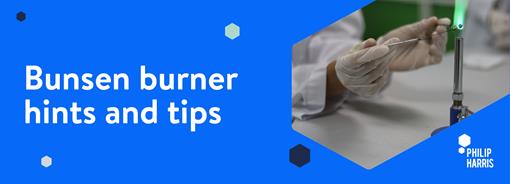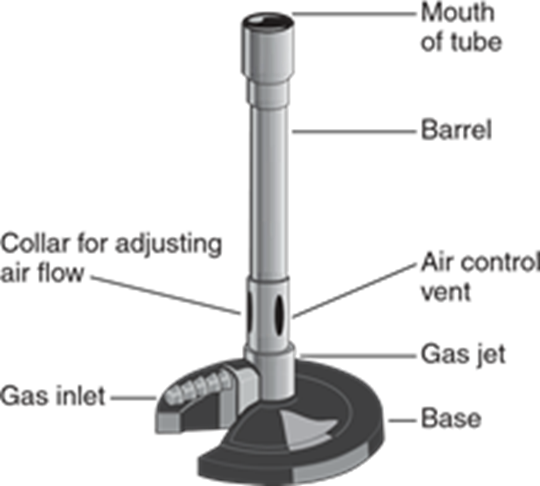Bunsen burner hints and tips

Bunsen burners, the chances are you have almost certainly used one at some point in school. Bunsen burners are used within laboratories to provide a safe heat source for many Science experiments and tests. Bunsen burners are used for a range of applications for heating, sterilizing and combusting in all kinds of laboratory settings. This information is provided as a helpful guide on safe usage of a Bunsen burner by Science Technicians and Teachers.
History of the Bunsen burner
Bunsen burners were developed by Robert Bunsen during the construction of a new laboratory at the University of Heidelberg in 1855. Bunsen required a reliable burner for his work. Along with the University Mechanic, Peter Desaga, he designed a burner was hot, sootless and mixed air and gas before combustion. It has been an essential part of laboratory life ever since.
What are the parts of a Bunsen burner?
Before using the Bunsen burner, familiarise yourself with the parts. This diagram shows the labelled parts of the Bunsen burner.

How to light a Bunsen burner
- Ensure the lab bench is clear from all flammable and combustible materials.
- Place the Bunsen burner onto a heat proof bench mat.
- Connect the rubber tubing from the Bunsen burner’s gas inlet to the gas valve. Ensure there are no holes or cracks in the tubing.
- Close or partially close the air vents on the Bunsen burner. This will provide a yellow flame when lit. The yellow flame is the safety flame.
- Light a splint, then turn on the gas.
- Bring the lit splint alongside the barrel of the Bunsen burner and raise it slowly over the edge of the barrel from the side.
- After the Bunsen burner is lit, thoroughly extinguish the splint with water.
- Adjust the air supply by turning the metal collar to get a tight, bright blue, cone-shaped flame. This is a very hot flame and sometimes called a “roaring flame”.
- Turn off the gas at the gas source when finished using the Bunsen burner.
Safety advice when using a Bunsen burner
- Always light the splint before turning on the gas.
- Always inspect the Bunsen burner, tubing, and gas valve before use.
- Tie back long hair and do not wear loose long sleeves. Take care that hair, clothing, and hands are a safe distance away from the flame at all times. Never reach over an exposed flame.
- Use tongs when holding objects in a flame.
- Never leave a lit Bunsen burner unattended.
- Never leave anything that is being heated unattended.
- Always turn the Bunsen burner off when it is not in use.
- Never look into a test tube or container being heated. Never point the open end of a test tube being heated towards anyone.
- The barrel of the Bunsen burner may remain hot for some time after the burner has been used. Carefully check to make sure the burner has cooled before moving it or putting it away.
Experiments to try using a Bunsen burner
A Bunsen burner is a cornerstone item in Science education and can be used in a myriad of experiments across all Scientific disciplines. Take a look at our fractional distillation experiment to demonstrate how useful, everyday fuels, gases and oils can be separated out from crude petroleum.
Learn more about using a Bunsen burner
The Philip Harris specialist team are here to help with any technical questions you have about Bunsen burners, or any other support you need. Call them on 0345 120 4521 or e-mail techsupport@philipharris.co.uk.
Check out our Twitter and Facebook for more tips for Science Technicians and Teachers









